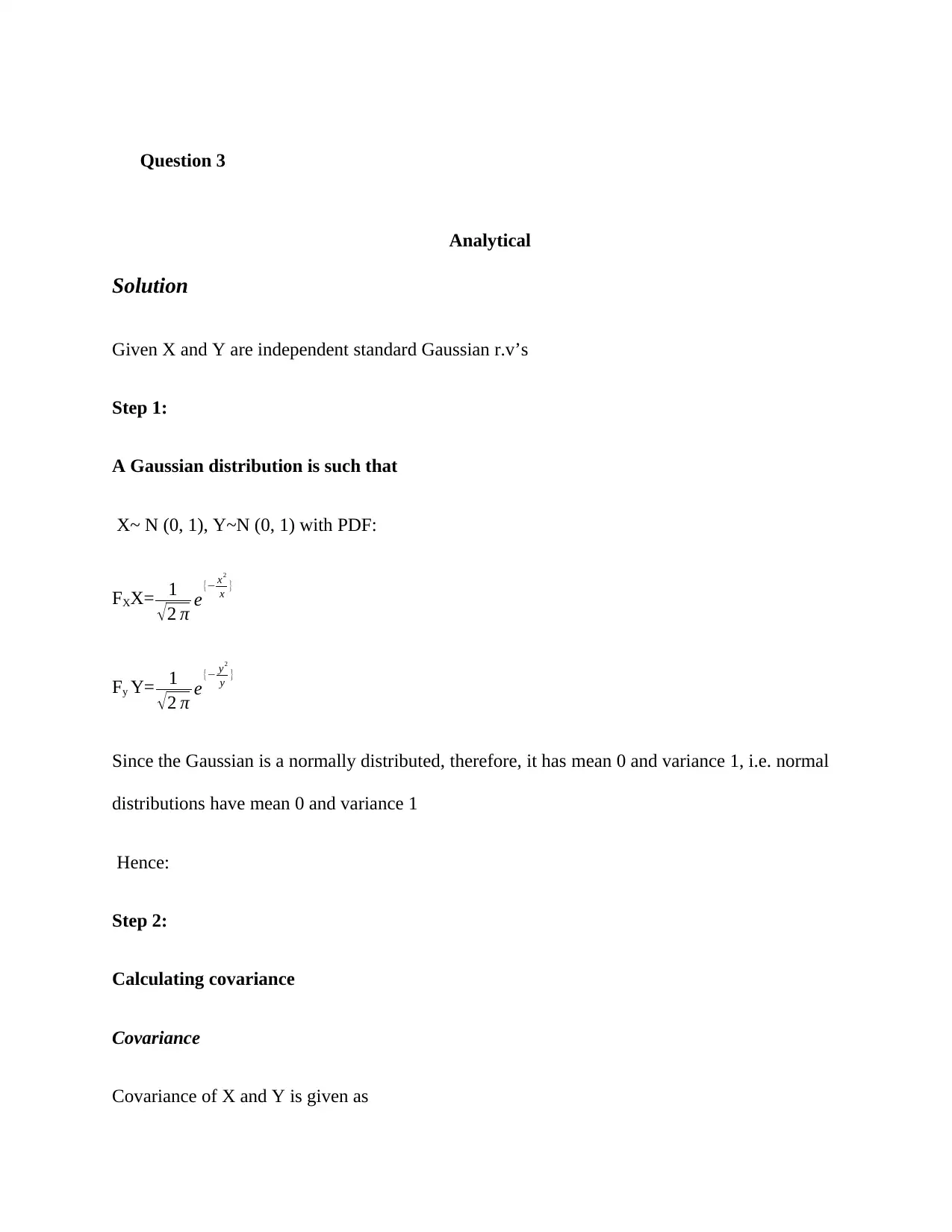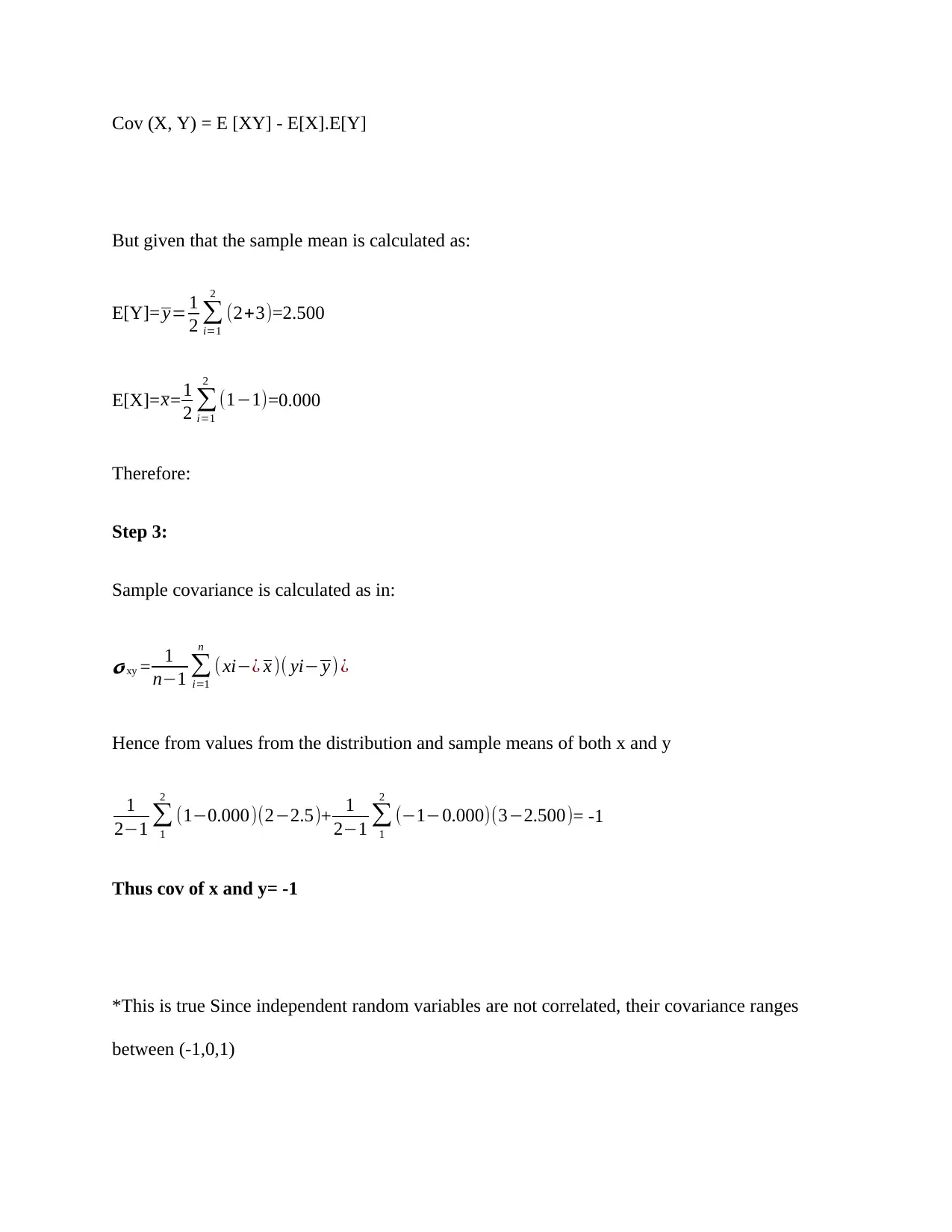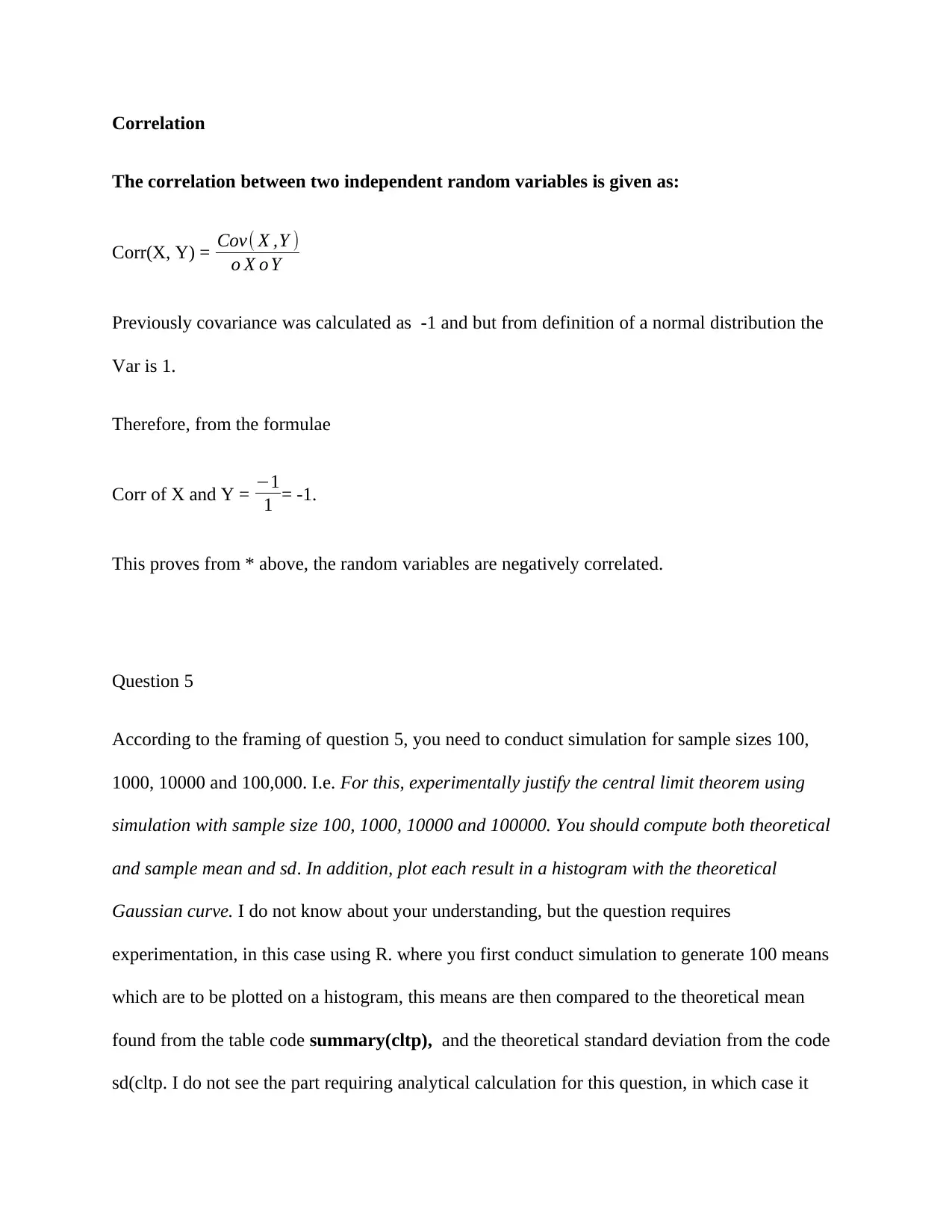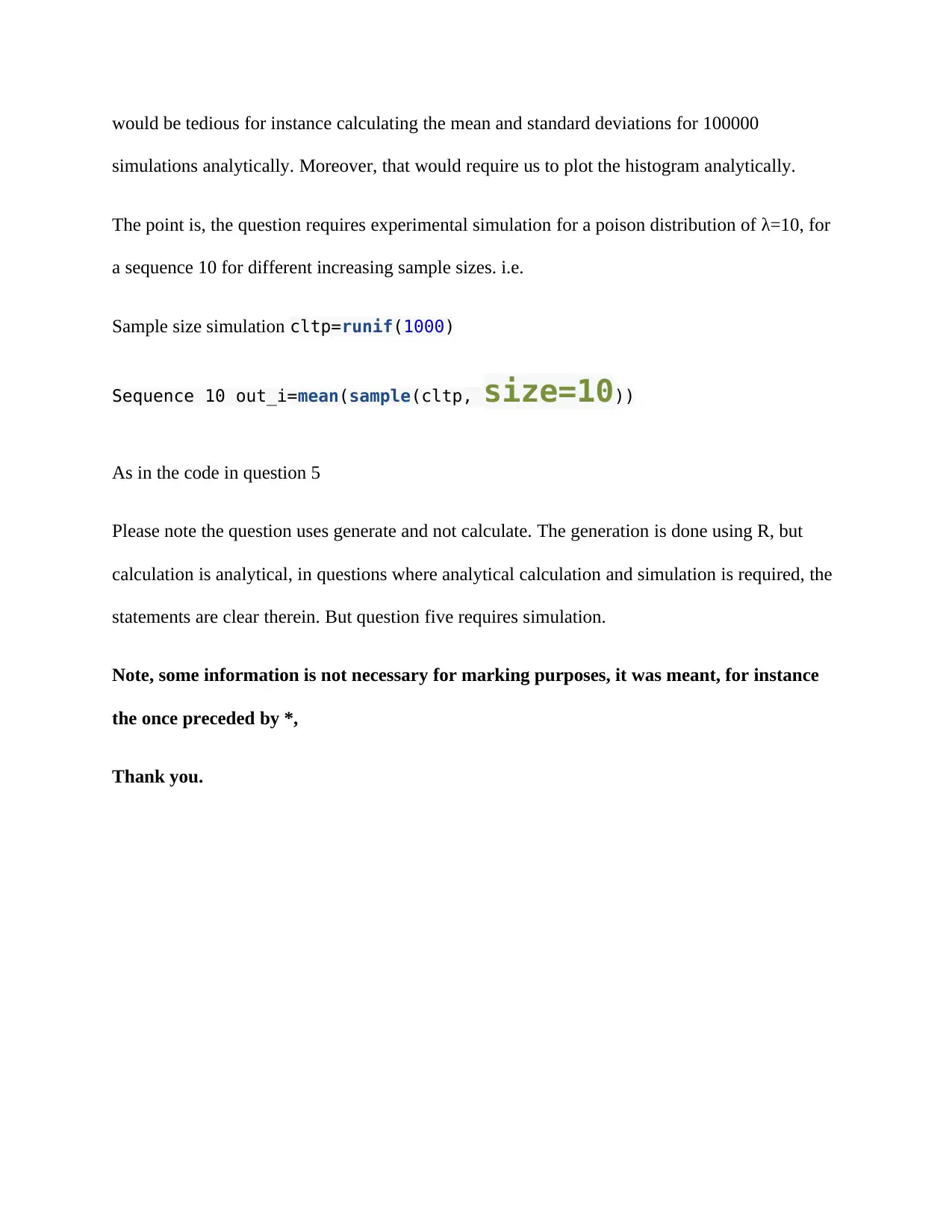Analyzing the covariance and correlation between two independent standard Gaussian random variables
VerifiedAdded on 2023/06/14
|4
|650
|342
AI Summary
This solution explains how to calculate the covariance and correlation between two independent standard Gaussian random variables. It includes step-by-step calculations and examples. Additionally, it clarifies the experimental simulation required to justify the central limit theorem using different sample sizes. The simulation is conducted using R and the results are plotted on histograms with theoretical Gaussian curves.
Contribute Materials
Your contribution can guide someone’s learning journey. Share your
documents today.
1 out of 4









![[object Object]](/_next/static/media/star-bottom.7253800d.svg)